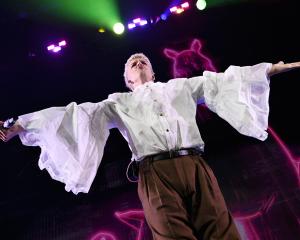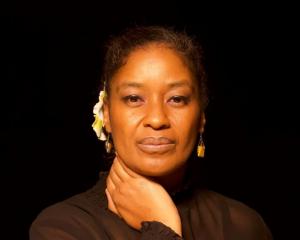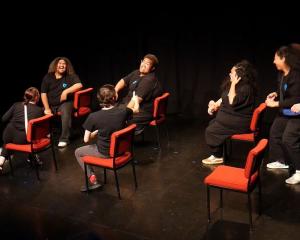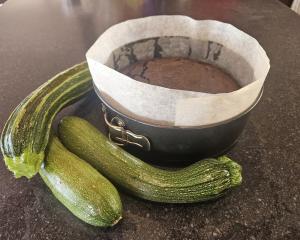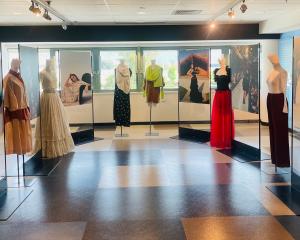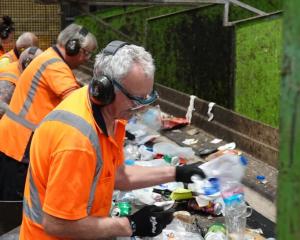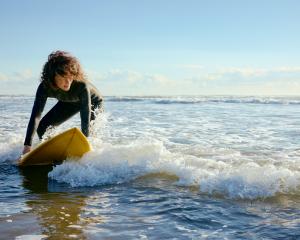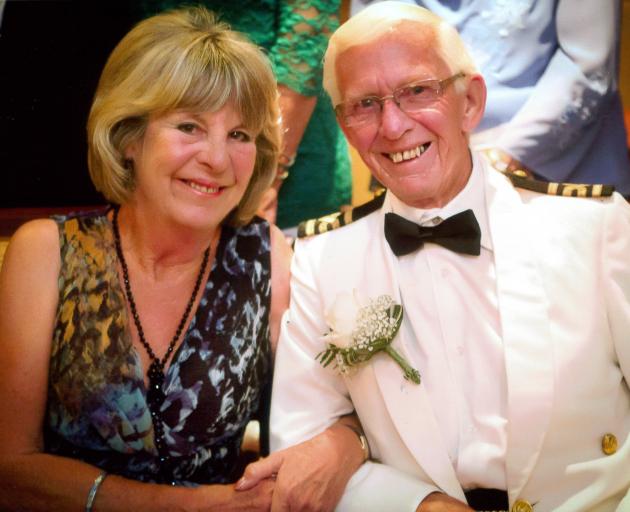
And while the sea was to dominate much of his life, there were times when his feet remained firmly on the ground, in his dogged determination to make a success of everything he took on, from commanding a foreign-going ship to marketing a cure for smelly feet.
Born in 1941, at the height of World War 2, Bill’s earliest memories were of being carried on his brother’s back to the neighbourhood air-raid shelter in the dead of night and listening to the adults debating whose planes were flying overhead. ‘‘Is it one of theirs, or one of ours?’’ If anything, this experience very likely aroused his curiosity about the outside world.
Bill was the middle child of William and Winifred Galer, with an older brother, John, and younger sister, Freda.
Growing up in a close-knit coal-mining town, Bill set his sights in only one direction: the horizon, spending his after-school hours at the harbour, badgering the fishermen to take him out with them.
On one occasion, he hid in a lifeboat on a freighter that was scheduled to leave port that night, only to wake up freezing cold and the ship still alongside the wharf! He went home, finding himself severely chastised by his distraught mother.
His parents were no less happy when, at age 16, he decided to leave Ryhope Grammar School and sign up as a cadet officer at sea. William sen was a builder and was keen that his son follow his trade — anything other than a pitman at one of the local collieries, as many young lads, following in their family tradition, did in those times. But in his parents’ opinion, leaving his home and family to run off to sea was almost as unthinkable.
Eventually, Bill got his wish, and in 1957, having persuaded his father to sign his indenture papers, he left for Antwerp, joining the MV Gretafield heading for Basrah in the Middle East.
From then on, the world was his oyster, and having served the required amount of sea time on both oil tankers and general cargo ships, in 1961 he sat and gained his second mate’s ticket in South Shields.
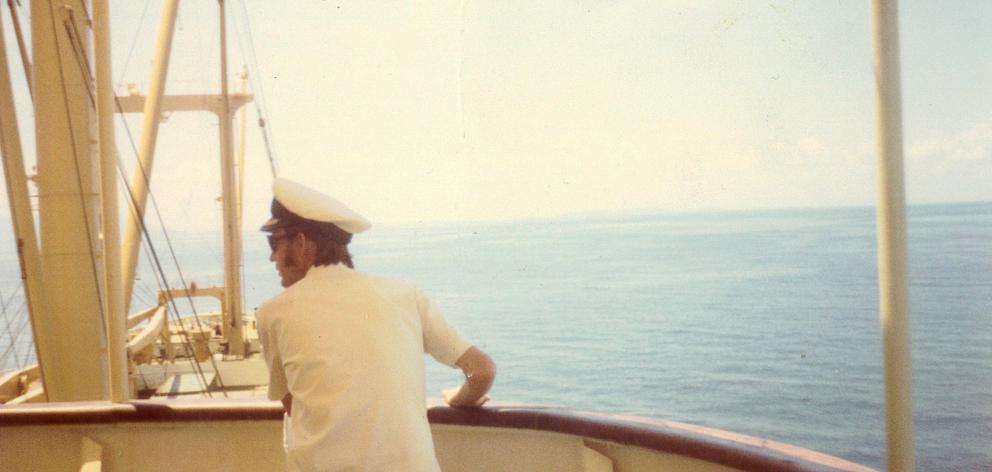
Bill used to say that in those times, you could go to an agency to find out where ships were heading and if a country you hadn’t sailed to before came up, you could virtually sign on. One ship was the SS Paparoa, heading to New Zealand.
Many a local may recall that the ship lost a nut from her propeller and was towed from Bluff to the dry dock in Port Chalmers by the tug Otago in 1963, considered no mean feat for the local tug.
It was on that occasion that New Zealand took Bill’s fancy, and following the voyage back to Britain, he signed off the ship and bought an air ticket to Auckland. Briefly, he settled in Wellington and worked at the Meteorological Office. Then, deciding to see more of the country, he joined the coastal vessel MV Holmwood.
His first trip to Dunedin proved a game-changer, not just for Bill, but to the Dunedin girl he met over coffee at a bistro one afternoon.
Finding his life and travels fascinating, she agreed to meet him later at a dine and dance venue. She, too, had travelled, but no further than Tahiti, but had planned to sail back to the Pacific Islands.
So much had they in common and having danced away the evening, by midnight Bill had proposed — and she said ‘‘OK!’’
She was Lois Boothroyd and they married in Dunedin eight months later, remaining best friends and soulmates for 56 years.
When first married, Bill decided the sea was not the place for a married man and managed to find a shore job as a signalman at Taiaroa Head. With neither of them wanting to travel immediately, they decided to start a family. But two mortgages and three daughters later, hardship was beginning to set in, despite Bill’s search for a better paid job, including driving a launch on Lake Manapouri to and from Deep Cove, making pikelets in a bakery, and in 1967, a stint as a TV reporter on DNTV2’s Town and Around.
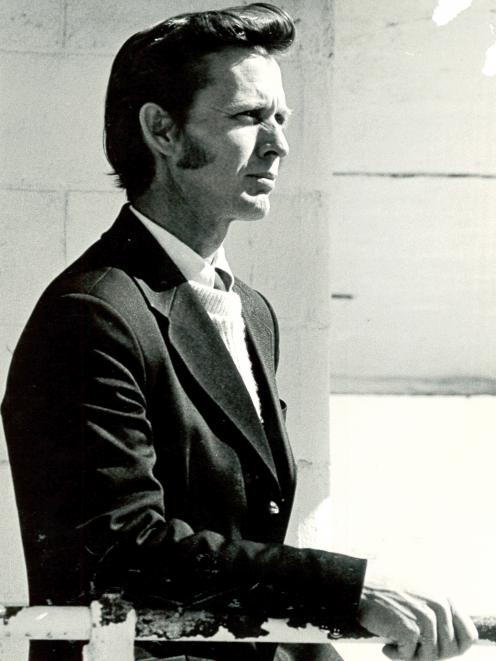
But a lot of water had to pass under the proverbial bridge, not to mention the sea time needed. Bill joined the Union Steamship Company, which carried cargo between New Zealand and Australia. Not enjoying solo parenthood in Dunedin, Lois and the children moved to Sydney, where Bill joined the Austasia Line passenger/cargo ship, SS Malaysia, sailing between Sydney and Singapore.
Then came six months in Wellington, where Bill studied and gained his foreign-going master’s ticket at 32.
Almost immediately after moving back to Australia, Bill was offered a post in Malaysia, commanding ships for the newly formed Malaysian International Shipping Corporation.
Fortuitously, at the same time, another new Singapore company was looking for a mate experienced in the navigation of the Great Barrier Reef for a run-job between Australia and Southeast Asia.
Bill agreed to do it — on condition he could take his wife and children, thereby saving the cost of the move. The company agreed and for three months the family travelled around Australian ports and up to Malaysia on a crusty old German-built vessel, renamed Bintang Pagi.
On arrival, Bill got his command, first on the Bunga Seroja, then the Bunga Teratai, carrying cargo and containers to and from Europe. Schooling for the children in Port Kelang proving difficult, Lois reluctantly returned to New Zealand a year later, while Bill continued for a further year with Lois joining him for three months while the children boarded in Dunedin.
Then came the longed-for sea-change. Bill was appointed harbourmaster in Greymouth and it was a chance to become a family again.
It was only for a year, but 1975 was a particularly eventful one for the coast. There was a tuna-run, attracting fishing boats from other ports throughout New Zealand and many of their skippers were unused to the coast’s hazardous conditions. Plus there was the notorious Grey River bar, which over the years has taken many lives.
Apart from piloting ships into the harbour — one, during Hurricane Alison, which saw half of Greymouth’s population out on the breakwater waging bets on whether ‘‘Captain Bill’’ would get the ship over the bar without it becoming yet another casualty — Bill was called out on numerous occasions directing the refloating of vessels blown on to the beach, or plucking fishermen from the sea as vessels sank beneath them.
Usually in darkness, it involved a test of Bill’s expert navigational skills pinpointing their position. Under his watch, eight fishermen were rescued, while two, who reputedly removed their life jackets to try to swim to safety, lost their lives.
Determined to make their journeys safer, he posted weather forecasts and bar conditions on the local pub wall, and plugged for the acquisition of a sturdy rescue vessel, rather than having to rely on one of the larger local fishing vessels being in port and ready at a moment’s notice for a rescue mission.
During that year, too, when the proposed export of Mt Davy coal to Japan was an issue, Bill researched and suggested a method of exporting the coal direct from Greymouth via a single-point mono-mooring buoy off the West Coast, rather than by rail to Lyttelton to enable the profits to benefit the Coast, rather than somewhere else.
Until the plug was finally pulled by the Government on the mining of Mt Davy coal, the issue remained highly controversial.
With the opening of the Port Chalmers container terminal, the opportunity came to move back to Dunedin. Bill’s role was a terminal supervisor, heading a shift for the discharging and loading of containers, which kept him out of mischief for 17 years.
Alan Petrie, who worked with Bill on what was known at the time as the ‘‘star shift’’, due to the record it broke for the quickest turnaround of ships, eager to avoid costly delays, remembers Bill’s cheerful optimism and ‘‘can do’’ approach, physically and mentally, particularly during the terminal’s formative years.
‘‘He did not merely receive information, but had to get out there and see for himself. Nor did he just accept the status quo if he felt it was not fit for purpose, but would press strongly for a necessary change.
‘‘Being on shift with Bill was never dull or boring and when he resigned in 1993, he left a noticeable gap in the ranks.’’
For his next role change, Bill didn’t have to go far. He was appointed by the Maritime Safety Authority as inspector of ships for Otago, which covered all vessels used commercially, including those in Queenstown, and investigating injuries and deaths resulting from noncompliance of safety regulations.
Then came another major change, this time almost as far from the sea as anyone in New Zealand could go —to Ophir, in Central Otago. As Bill used to joke: ‘‘When you’ve carried your anchor so far inland that no-one knows what it is, that’s when you put it down and stay!’’
The reason for this radical move stemmed from an earlier conversation with a fellow container terminal worker. The subject at smoko that morning was smelly feet. Bill confessed that his socks could walk out the door, resulting in Wayne Nicholson offering to give him his grandmother’s recipe.
‘‘That’ll fix the problem,’’ he said. It did, and ever the entrepreneur up for a challenge, Bill suggested they patent the recipe and market the product themselves.
And so, Gran’s Remedy for Smelly Feet and Footwear was born.
Starting as a kitchen industry, with Wayne and wife Jose mixing the powders and Bill and Lois packaging it for sale by mail order and fourlocal pharmacies which displayed it on a sale or return basis, Gran’s Remedy grew almost overnight to the stage where the two couples formed a registered company. The rest is now legendary.
With them from the outset was a local accountant, later to become the company’s chief executive, Jim Reay, who vividly recalls Bill’s role: ‘‘Bill’s ideas were occasionally vigorous, but always constructive and integral to the success of the business.’’
Other former colleagues have remarked that if Bill had an idea, he ran with it to the end. He was innovative, and driven to succeed with everything he took on.
With the company well established in New Zealand and doing well overseas, Bill and Lois decided to quit their full-time roles — Bill with the Maritime Safety Authority and Lois with the New Zealand Historic Places Trust — and semi-retire to their crib, an historic former miner’s cottage in Ophir.
But not to vegetate entirely. They turned a neighbouring block of shearers quarters into a backpacker lodge to cater for cyclists using the newly opened Central Otago Rail Trail, which they ran for 11 years.
Ever present, in Bill especially, was the lure of the sea, and during the winter months when the lodge was closed, they took to cruising. Often it brought them into contact with importers of Gran’s Remedy, in such countries as Japan and Germany, which helped foster good relations with the company.
Like all good things, Bill’s regular ‘‘fix’’ for the sea came to an abrupt end last year, due to Covid-19. By then, the couple had moved back to Dunedin to spend more time with daughters Kristine, Joanne and Trudy and grandchildren Finn, Jesse, Kaitlin and Anna.
He died after a short battle with cancer on January 26, aged 79.
— Supplied

